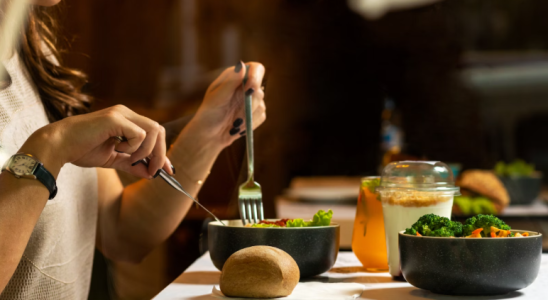11 Simple diet tweaks that might make you feel better
- Replies 0
Our food choices don’t just determine weight gain or loss—they also influence how our bodies respond to stress, manage inflammation, and cope with long-term discomfort.
Many people don’t realize that the diet they follow each day can play a direct role in whether pain lingers in the body or begins to heal more effectively.
From everyday staples to often-overlooked ingredients, the foods placed on a plate can either quietly fuel inflammation or steadily work to help fight it.
That kind of inflammation, if left unchecked, can damage tissues and worsen pain over time. Choosing plants over heavy animal proteins may make a meaningful difference.
You’ll find fiber in vegetables, berries, nuts, beans, oatmeal, brown rice, and even popcorn. Making it part of every meal keeps inflammation in check while improving gut health.
Fruit juice, however, should be limited due to its high sugar and low fiber content. Aim for at least five cups of vegetables and fruits each day to maximize benefits.
Others, like cloves, cinnamon, tarragon, and allspice also provide powerful support. Adding these to meals is one of the simplest ways to make your food part of your healing process.
These fats extend shelf life but shorten health span. Steering clear of them can spare your body unnecessary pain triggers.
While not all saturated fats are harmful, keeping them in check reduces risk factors linked to pain. Moderation and balance remain key.
Also read: The ultimate guide to an anti-inflammatory diet – eat this, not that!
Omega-3s—found in fatty fish, walnuts, chia, and leafy greens—help lower inflammation and protect the heart. Adding at least two servings of fish weekly is a good target.
Regularly substituting these fats for less healthy alternatives improves cholesterol, blood sugar, and pain resilience. Building meals around these healthier oils makes a lasting impact.
Limiting yourself to about 1.5 ounces a day provides benefits without overdoing the sugar. Choosing quality dark chocolate makes dessert part of your wellness routine.
Also read: One small change could support your liver—and experts say it’s worth it
It doesn’t require extreme restrictions but should be practiced carefully, especially by older adults concerned about frailty. Aligning meals with natural daily rhythms could support healing.
Swapping them out for whole, minimally processed alternatives supports long-term healing. Avoiding them altogether is one of the clearest steps to a pain-conscious diet.
Read next: Experts reveal the protein-packed food that supports heart health after 60

Have you tried making dietary changes to manage pain? Which of these tips do you already follow, and which ones do you think would be hardest to commit to? Share your thoughts in the comments—your experiences might help someone else find relief.
Many people don’t realize that the diet they follow each day can play a direct role in whether pain lingers in the body or begins to heal more effectively.
From everyday staples to often-overlooked ingredients, the foods placed on a plate can either quietly fuel inflammation or steadily work to help fight it.
1. Pay attention to proteins
Proteins are essential, but the source matters when it comes to managing pain. Leaning on plant-based proteins such as beans, nuts, and whole grains has been linked to lower levels of chronic inflammation.That kind of inflammation, if left unchecked, can damage tissues and worsen pain over time. Choosing plants over heavy animal proteins may make a meaningful difference.
2. Eat more fiber
Fiber not only supports digestion but also helps regulate inflammation in the body. The recommendation is at least 21 grams a day for women over 50 and 30 grams a day for men over 50.You’ll find fiber in vegetables, berries, nuts, beans, oatmeal, brown rice, and even popcorn. Making it part of every meal keeps inflammation in check while improving gut health.
3. Eat your vegetables and fruits
Produce delivers essential vitamins, minerals, and antioxidants that directly reduce inflammation. Berries and cherries are standout choices, while nonstarchy vegetables should be emphasized if you have diabetes or prediabetes.Fruit juice, however, should be limited due to its high sugar and low fiber content. Aim for at least five cups of vegetables and fruits each day to maximize benefits.
4. Use more anti-inflammatory herbs and spices
Certain spices do far more than add flavor—they actively reduce inflammation. Research highlights turmeric, ginger, rosemary, paprika, sage, and cumin as top choices.Others, like cloves, cinnamon, tarragon, and allspice also provide powerful support. Adding these to meals is one of the simplest ways to make your food part of your healing process.
5. Avoid trans fats
Trans fats are some of the worst culprits when it comes to fueling inflammation. They are often hidden in packaged baked goods, fried foods, frozen pizzas, and anything with “partially hydrogenated oils” on the label.These fats extend shelf life but shorten health span. Steering clear of them can spare your body unnecessary pain triggers.
6. Limit saturated fats
Saturated fats, especially from red meat, butter, cream, and full-fat dairy, can increase inflammation. Swapping those foods for fish, poultry, and other lean proteins is a better approach.While not all saturated fats are harmful, keeping them in check reduces risk factors linked to pain. Moderation and balance remain key.
Also read: The ultimate guide to an anti-inflammatory diet – eat this, not that!
7. Balance omega-6s and omega-3s
Too many omega-6 fatty acids compared to omega-3s can throw the body out of balance. Most Americans consume omega-6s at a ratio far higher than needed, thanks to common oils like soybean, sunflower, and corn.Omega-3s—found in fatty fish, walnuts, chia, and leafy greens—help lower inflammation and protect the heart. Adding at least two servings of fish weekly is a good target.
8. Eat monounsaturated fats
Not all fats are damaging—monounsaturated fats can actually lower inflammation and protect overall health. Olive oil, avocados, sesame oil, and peanuts are excellent sources.Regularly substituting these fats for less healthy alternatives improves cholesterol, blood sugar, and pain resilience. Building meals around these healthier oils makes a lasting impact.
9. Enjoy some dark chocolate
For those with a sweet tooth, this is a welcome recommendation. Dark chocolate with at least 70 percent cocoa has been shown to decrease inflammation and lower blood pressure.Limiting yourself to about 1.5 ounces a day provides benefits without overdoing the sugar. Choosing quality dark chocolate makes dessert part of your wellness routine.
Also read: One small change could support your liver—and experts say it’s worth it
10. Close the kitchen at night
Timing your meals may matter as much as what you eat. Intermittent fasting, or limiting food intake to an 8- to 12-hour daily window, has been linked to reduced inflammation and better management of autoimmune conditions.It doesn’t require extreme restrictions but should be practiced carefully, especially by older adults concerned about frailty. Aligning meals with natural daily rhythms could support healing.
11. Stay away from ultra-processed foods
Highly processed foods packed with refined grains, sugars, and excess salt disrupt gut health and increase inflammation. Over time, they can even damage the intestinal lining and activate genes tied to pain.Swapping them out for whole, minimally processed alternatives supports long-term healing. Avoiding them altogether is one of the clearest steps to a pain-conscious diet.
Read next: Experts reveal the protein-packed food that supports heart health after 60
Key Takeaways
- Diet plays a direct role in lowering inflammation and easing chronic pain.
- Plant-based proteins, fiber, vegetables, fruits, and spices like turmeric are powerful anti-inflammatory tools.
- Trans fats, too many saturated fats, and ultra-processed foods are leading contributors to pain-related inflammation.
- Healthy fats, proper balance of omega-3s, intermittent fasting, and even dark chocolate can all support better long-term pain management.







